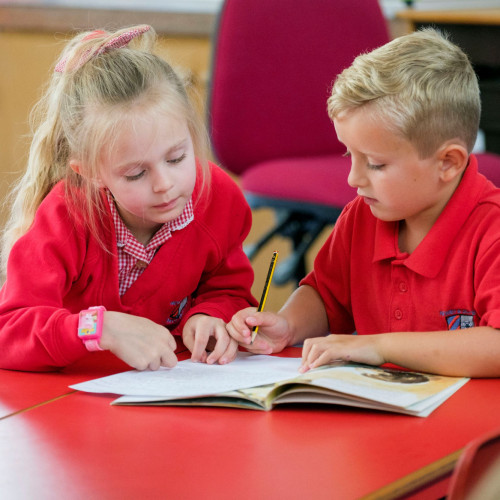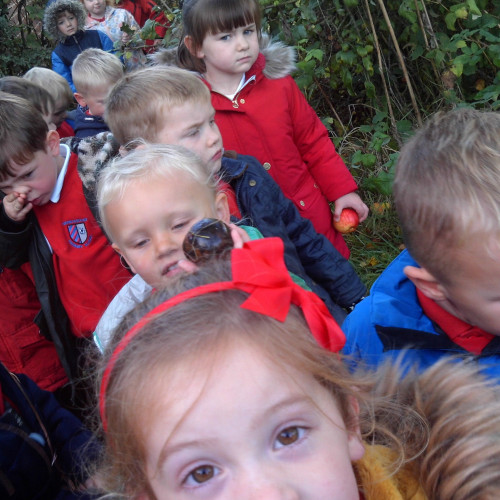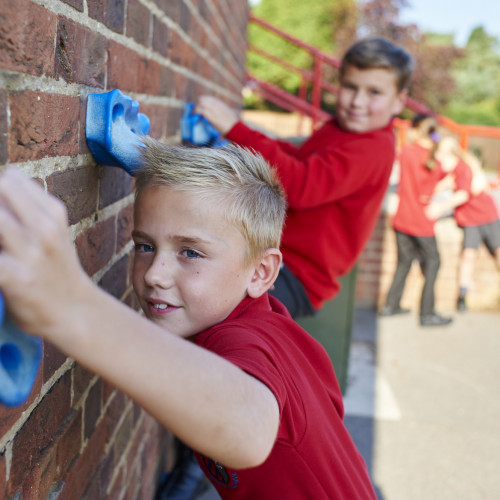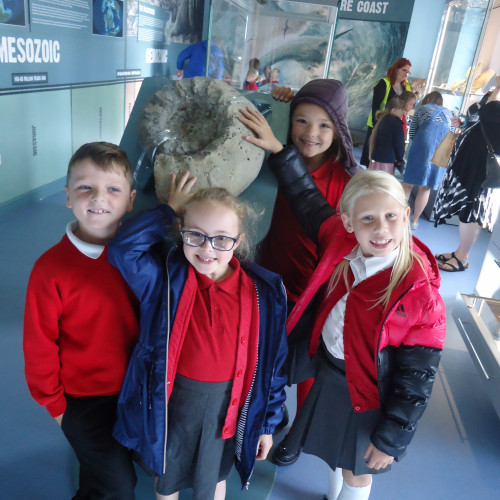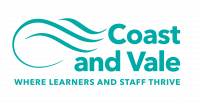Writing
We want to help all of our pupils to develop into creative writers. We achieve this through the Talk for Writing approach. It enables pupils of all ages and abilities to learn to write a wide range of stories and varying text types. The multi-sensory and interactive teaching activities used include:
- Listening to and learning texts and stories;
- Taking part in drama and role-play;
- Drawing and story mapping;
- Using exploratory and presentational talk:
- Collecting words and language strategies;
- Building their working knowledge of grammar;
- Taking part in debating and discussion.
Talk for Writing is an innovative approach to teaching writing. It was developed by the literacy specialist and writer Pie Corbett. It uses high quality model texts to introduce the pupils to different story/text types. They then learn these off by heart and scrutinise with a writer’s critical eye
They learn the underlying structures and the process of planning using story maps. They also learn about the key strategies for creating interesting characters and settings. They learn to use a range of sentence types and literary devices to create different effects including suspense or adventure.
Talk for writing has three key phrases which work together to develop knowledge, confidence and independence in writing.
Imitation and Immersion
Talk for Writing units begin with a hook which fires up the creativity and imagination of the children before they are immersed in the model text.
During this phase, the pupils learn the text using actions and story maps. The key to success for the pupils is that they internalise the text type through repetition and rehearsal. They explore the structure of the narrative and investigate the different characters, settings and events. They also begin to look closely at the language used and the effects this has on the reader. The pupils ‘read as a reader’ and ‘read as a writer’ during this process. The classroom becomes a dynamic, interactive resource filled with word ideas, sentence types and language tools collected by the pupils to use in their stories later.
Innovation
During this phase, the teacher and the pupils begin to change aspects to model the text using their own ideas. They explore the text using different characters, settings or events and develop new ideas for descriptive language whilst sticking closely to the underlying structure.
It is during this phase that the pupils work using their toolkits. The toolkits, based on the features and ingredients of the model text, remind pupils of the different strategies they could use in their stories and helps them to see the progress they are making.
Independent Application
During the independent application stage, the pupils plan and write their own story/text based on the text type they have been learning. They experiment with new ideas and begin to explore their own style of writing – they are able to do this by independently applying what they have learnt from the previous two stages. As the children become more confident, they will be able to 'fly away' from the model/original text, thus allowing their own flare and authorial intent, for their own stories and non-fiction texts, to shine through.
Invention Units
In order to develop independence, we have implemented a new structure that provides pupils with the opportunity to have more freedom and choice with their writing - the Invention stage. The teacher, on occasion, may choose to allow the children time to simply 'invent'. This extra stage would be where the pupils would be provided with a stimulus, such as a short video, a picture or a story opening, and will then be allowed to choose one of the four purposes for writing (to entertain, to persuade, to discuss, to inform). The pupils will then plan their own piece of writing, or invent, using a text map and will then independently create and edit a piece of writing.
The teacher may also choose to do this to extend high attaining writers by providing them with the opportunity to write at length in a way that will stimulate their interests and creativity.
We believe that by providing this choice, it will further develop a love for writing and will also provide each child with a bank of truly independent pieces of writing that can be used for assessment purposes.

